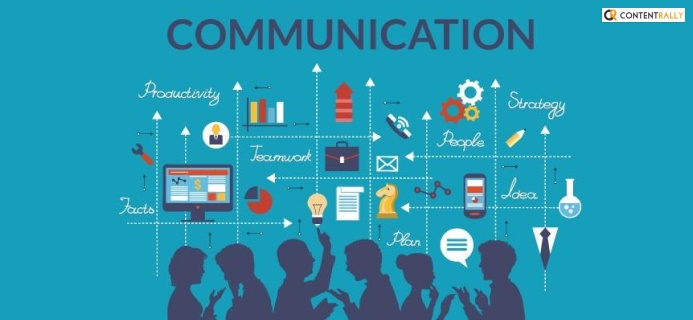Simply owning a business will not make you an entrepreneur. Anyone can start their own business, but not everyone can become an entrepreneur. Starting is tough but executing the task in a better way is much more challenging.
Therefore everyone acknowledges it takes a lot more than having lots of money and owning a business to become an entrepreneur. It takes a lot of skill and effort, along with time invested, to build a successful business. Therefore, reading about types of entrepreneurs might give you a good insight into this topic.
Contents
Who Is An Entrepreneur?
An Entrepreneur is a person who is taking lots of risks and starting their business with their own money. Does this sound a little metaphoric? Yes, this is the real meaning of entrepreneur ships. But actually, the entrepreneurs are not just business start-ups. They are more like pathfinders and leaders. They are taking lots of risks and then showing a different way to the new generations of people.
What Are The Personality Traits Of A Successful Entrepreneur?
Even though every entrepreneur has different goals, the success formula is always the same for everyone.
Here are some of the personality traits of a successful entrepreneur.
- Robust promising work ethics.
- Deep passion for the business and goal.
- Self-starter.
- Motivational.
- Good learning potential.
- Easy-going attitude.
If you want to become an entrepreneur, then you have clicked on the right link. Here, you will find an explanation of various kinds of entrepreneurs. In addition, you will also find an explanation of some of the skills required to become one.
What Does It Take To Become An Entrepreneur?
Becoming an entrepreneur is no easy task. It takes a lot of skill and effort to be an entrepreneur and build a franchise business.
Therefore, some of the essential characteristics of entrepreneurs that more than 3 types of entrepreneurs should know about are:
1. A Penchant For Innovation And Money

As an entrepreneur, you must be willing to be creative and innovative in your actions constantly. You will not find profit-making and business opportunities to bank on unless you do your research and get creative.
Innovation is required in entrepreneurship because doing so will allow you to be different from the competition.
Famous business leaders like Jeff Bezos and Mark Zuckerberg have made billions of profits because they did not stick to tried and tested methods. Instead, they applied their creative juices to reach the top.
2. Ability To Risk It All

Everyone knows that you need to risk your money to find the best low cost franchise opportunities. Because when you start a new business, you should not expect high revenues and profits from starting. You must slowly build your business to increase your sales generated and revenue earned.
The chances of your business plan going to be wrong. And as a result, you will end up being a failure. Therefore, make the best decisions possible and innovate to turn it into a success.
3. Be An Excellent Communicator

Ask yourself this – why do people become entrepreneurs and start a new business? As an entrepreneur, you must be money-minded at all times. Use words like profits, sales, revenues, turnovers, marketing, and more to motivate employees and help them understand what’s needed to run the business.
4. Good Research Makes Good Decisions

Becoming one of the types of entrepreneurs and starting a new company requires good decision-making skills. Therefore, you must conduct high-quality research to ensure that you make the best decisions available and make lots of profits. You should always start small but think big.
What Are The Different Types Of Entrepreneurs You Should Know?
In the business world, there are 8 types of entrepreneurs. You should know before starting a business in 2022 are:
1. Trading Entrepreneur

This type of entrepreneur deals with trading goods from one place to another. You do not create goods. You simply buy them and sell them to others. Most entrepreneurs consider wholesalers and retailers to be trading entrepreneurs.
For example, if you attain rights to Amazon distributorship, you can call yourself a trading entrepreneur.
2. Production Entrepreneur

These types of entrepreneurs are responsible for manufacturing the goods and products that you see on the market.
When you think of such entrepreneurs, Bill Gates and Steve Jobs should come to your mind. Therefore Microsoft and Apple manufacture the best computers globally, and they also excel as entrepreneurs because of their decisions.
3. Agropreneur

As you might have guessed, an Agropreneur is someone who owns an agriculture-based business. Most business people consider farmers who have their own farms to be Agropreneurs.
Being an Agropreneur means that you sell food products grown on your farms. In addition, producing goods like manure to supplement agricultural production also counts.
4. Private Entrepreneur

In terms of ownership, private entrepreneurs get counted as one of the several types of entrepreneurs. These entrepreneurs typically start by investing in small business opportunities and slowly expand them to new heights.
Their businesses are fully owned and funded by themselves. Being one of the most common types of entrepreneurship, hence you will probably start as an entrepreneur with a private firm.
5. Public Entrepreneur

The exact opposite of these types of entrepreneurs is the head of state-owned firms. Most firms related to transportation, security, NGOs, and lots more can only be owned by the government. Therefore, they only hire the best entrepreneurs for this job.
6. Sole Entrepreneur

A sole entrepreneur is a businessman who has complete ownership of their business. Hence you can look for the best home business opportunities to become a solo entrepreneur.
One of the best franchises to own, they have no joint partners sharing the responsibilities of running the business. Therefore, they are responsible for all the profits and even bear all the losses of the business.
7. Creative Entrepreneur

When it comes to small scale businesses, creative entrepreneurs typically get counted in it. However, these business persons are primarily artisans like musicians and movie producers.
You can say that their business is creative because it delves deep into the world of arts and crafts. Therefore, artistic innovation and freedom are essential in all aspects of the company.
8. Technopreneur

If you own a technology-based business, congratulations – you can now call yourself a technopreneur.
Technopreneurs like Bill Gates and Steve jobs delve into creating various devices and machines that enhance human lives. Most IT businesses and automobile businesspersons fall under these types of entrepreneurs.
9. Lifestyle Entrepreneur

A lifestyle entrepreneur is a type of entrepreneur who is selecting entrepreneurship for their attractive lifestyle. Yes. They do not have a very fixed goal or a business target. They are selecting the entrepreneur ships because this is working as a fun factor for them.
These types of entrepreneurs like to do experiments. Maybe the fun factors are more associated with the lifestyle of an entrepreneur. But the thing is, lifestyle entrepreneurs like to enjoy their online life.
10. Social Entrepreneur

Social entrepreneurs are specific types of entrepreneurs who are pretty passionate about solving social problems. These social entrepreneurs like to experiment and want to deliver a good impression over the internet.
To become a social entrepreneur, you will require some additional skill sets. For example, understanding social problems along with good communication and social skills.
Frequently Asked Questions (FAQs):
The 4 types of entrepreneurs are:
1. Small business
2. Scalable Startup
3. Large business
4. Social
The nine entrepreneurial personality types are:
1. Improver
2. Advisor
3. Superstar
4. Artistic
5. Visionary
6. Analyst
7. Fireball
8. Hero
9. Healer
These skills of an entrepreneur make them successful:
1. Time management.
2. Innovation.
3. Decision making.
4. Resource management.
5. Good communication.
You can become an entrepreneur by:
1. Gathering capital.
2. Thinking about the best startup ideas.
3. Do your research.
4. Start with a single product or service.
Are You Ready To Become An Entrepreneur?
There are various types of entrepreneurs depending on the kind of company and the products they sell. It is also dependent on the ownership of the firms and how much creativity goes into it.
While more types have many distinctions, these are the most commonly accepted types. So just select the one you want to become and make goals and strategies to supplement it and turn your dream into a success. I guess now you already know how many types of entrepreneurs are there and what are their qualities.
If you want to become an entrepreneur, but do not know where to start, read more at Content Rally! Business and entrepreneur pages and the journeys.
Read Also:


















